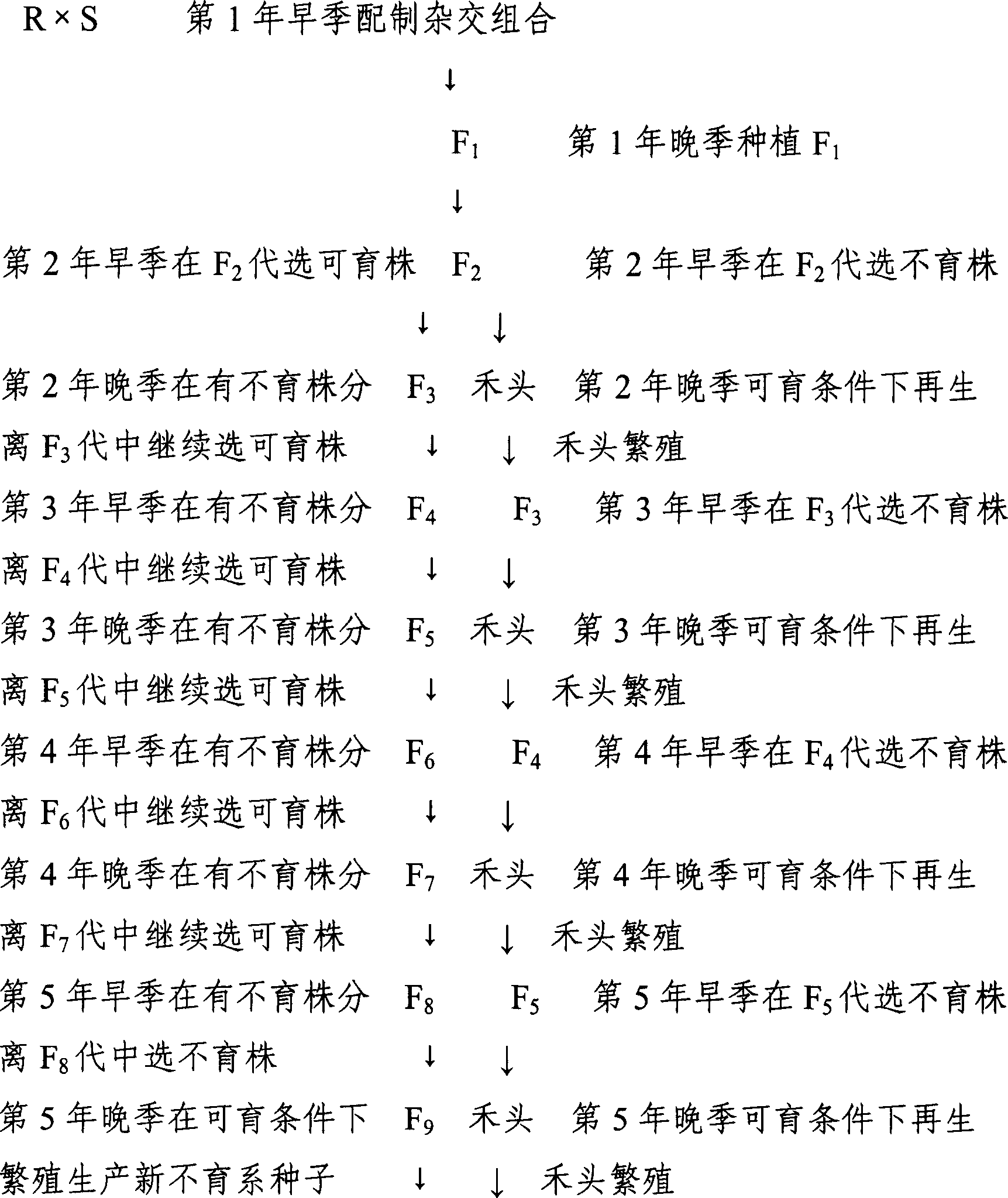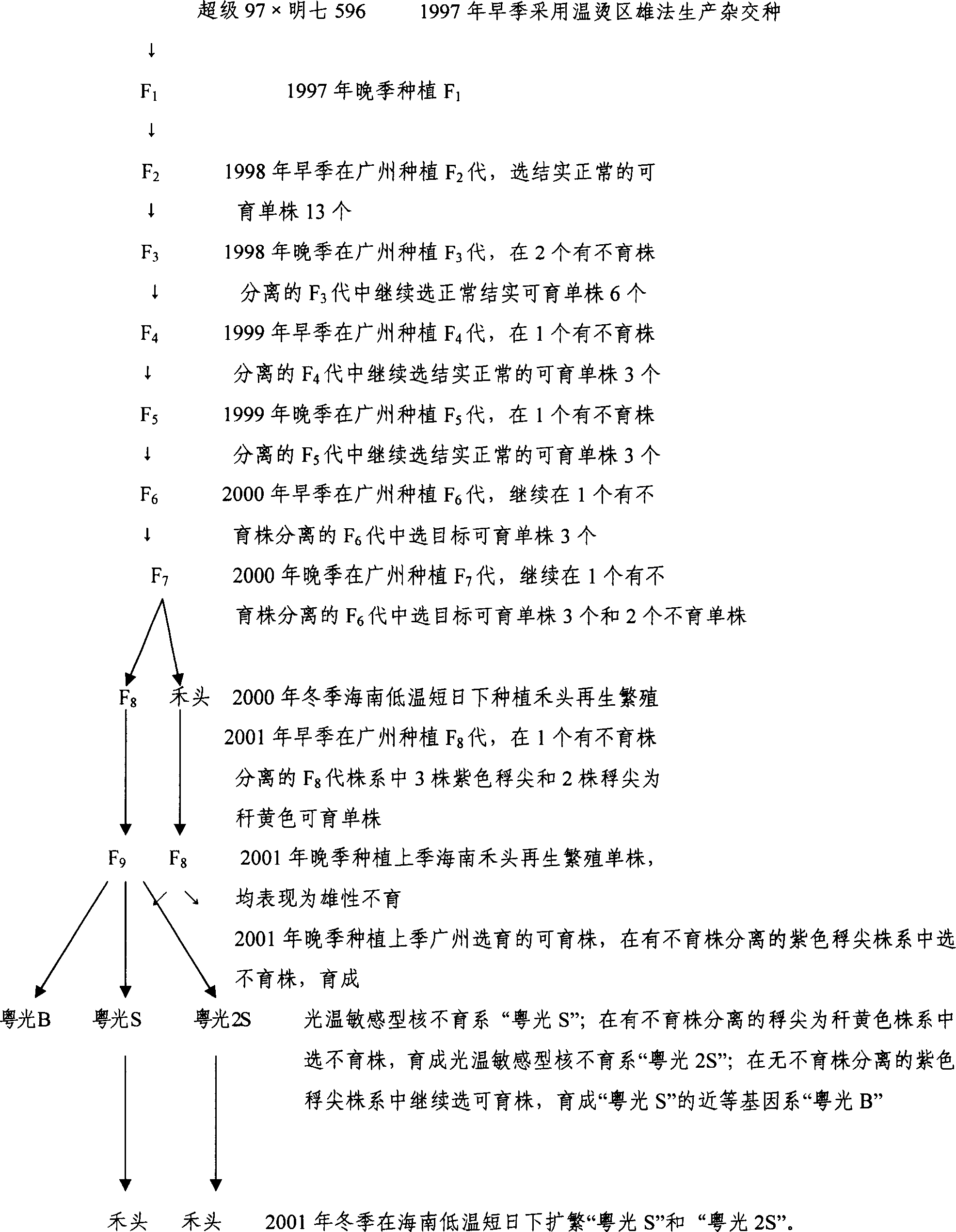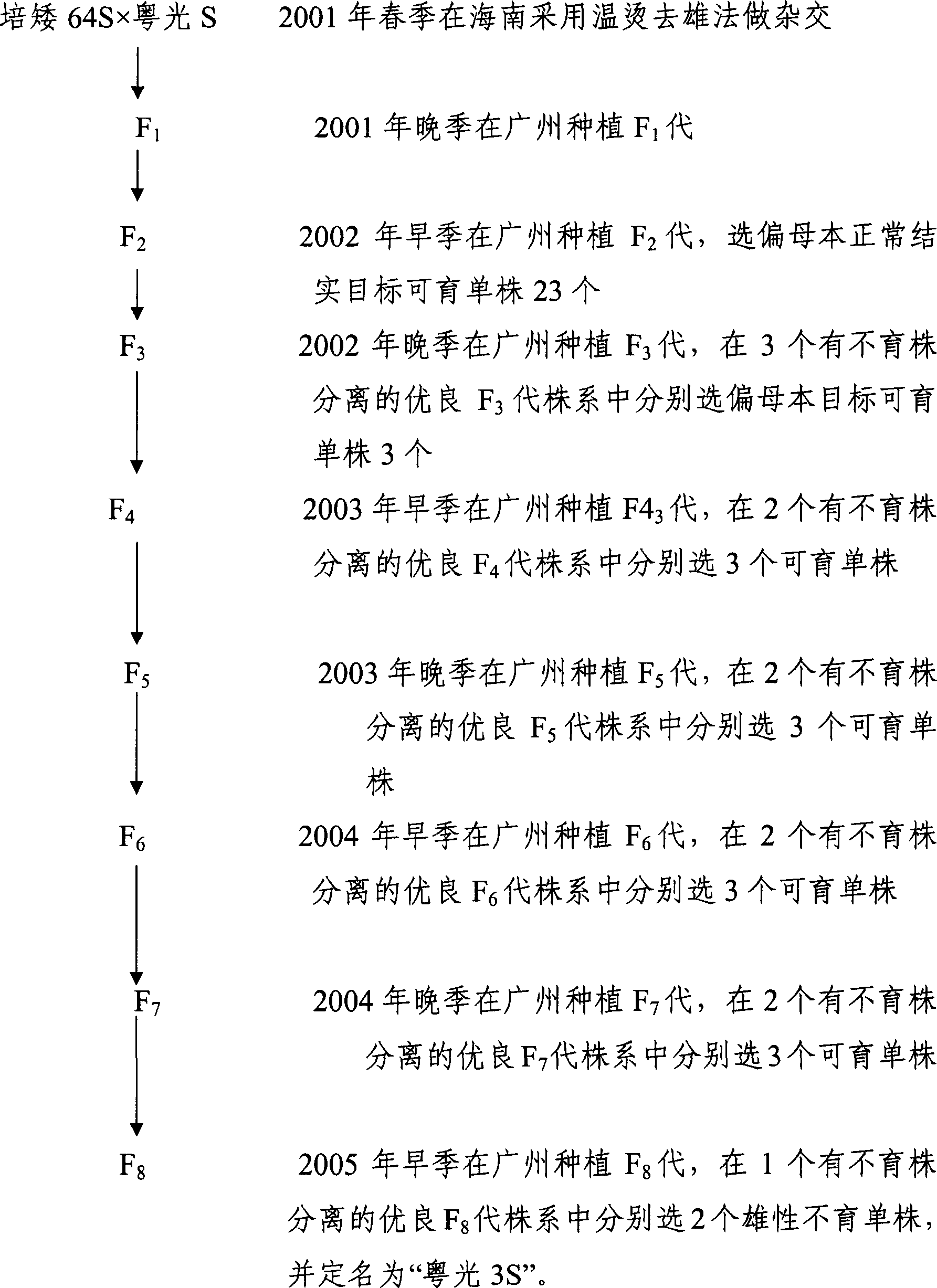Method for cultivating photo-temp. sensitive type male nuclear sterile rice
A breeding method and nuclear sterile technology, which is applied in the field of breeding light-temperature-sensitive male sterile rice germplasm, can solve problems such as poor grain filling, shortened breeding cycle, and reduced breeding costs, so as to improve predictability and breeding Effects of low efficiency, chalky rice rate and chalkiness, and shortened breeding cycle
- Summary
- Abstract
- Description
- Claims
- Application Information
AI Technical Summary
Problems solved by technology
Method used
Image
Examples
Embodiment 1
[0084] Example 1: Light and temperature sensitive genic male sterile rice germplasm Yueguang S and
[0085] The breeding process of Yueguang 2S
[0086] Taking Guangzhou as an example to describe the implementation process of cultivating light-temperature-sensitive GMS rice germplasm Yueguang S and Yueguang 2S in the present invention:
[0087] In the early season of 1997, hybrids were produced using the warm hot zone male method, and in the late season of 1997, F 1 Generations; 1998 Early Planting F 2 generations, and in the F 2 In each generation, select excellent target fertile individual plants with different maturity types, dwarf stalks with strong lodging resistance, high yield, good upper functional leaf color change at maturity, no obvious two-stage grain filling, translucent or transparent appearance of brown rice13 indivual. 1998 Late Season Planting F 3 Generation 13 strain populations, among which 6 male sterile plants appeared in 42 individual pla...
Embodiment 2
[0088] Example 2: Light and temperature sensitive genic male sterile rice germplasm Yueguang 3S and
[0089] The breeding process of Yueguang 4S
[0090] Taking Guangzhou and Sanya City, Hainan Province as examples, the implementation process of cultivating light-temperature-sensitive GMS rice germplasm Yueguang 3S and Yueguang 4S in the present invention is described:
[0091] In the winter of 2000, the light-temperature-sensitive genic sterile rice germplasms "Yueguang S" and "Peiai 64S" were planted under low-temperature and short-day ecological conditions in Sanya City, Hainan Province. At the beginning of March 2001, "Yueguang S" and "Peiai 64S" headed and flowered, and both showed male fertility. "Yueguang S"×"Pei'ai 64S" reciprocal hybrid combination was prepared by warming and killing males.
[0092] The following breeding generations were completed under the ecological conditions of high temperature and long days in Guangzhou.
[0093] "Yueguang S"×"Pei...
Embodiment 3
[0094] Example 3: Breeding process of light-temperature-sensitive genic male sterile rice germplasm Yueguang 5S
[0095] Take Guangzhou and Sanya City, Hainan Province as examples to describe the implementation process of the present invention's cultivation of light-temperature-sensitive genetic male sterile line rice germplasm Yueguang 5S:
[0096] In the winter of 2000, the light-temperature-sensitive genic sterile rice germplasms "Annong S" and "Yueguang B" were planted under low-temperature and short-day ecological conditions in Sanya City, Hainan Province. At the beginning of March 2001, "Annong S" and "Yueguang B" headed and flowered, and both showed male fertility. The "Annong S"×"Yueguang B" hybrid combination was prepared by the method of warming and killing males.
[0097] The following breeding generations were completed under the ecological conditions of high temperature and long days in Guangzhou.
[0098] "Annong S"×"Yueguang B" hybrid F planted in the late sea...
PUM
 Login to View More
Login to View More Abstract
Description
Claims
Application Information
 Login to View More
Login to View More - R&D
- Intellectual Property
- Life Sciences
- Materials
- Tech Scout
- Unparalleled Data Quality
- Higher Quality Content
- 60% Fewer Hallucinations
Browse by: Latest US Patents, China's latest patents, Technical Efficacy Thesaurus, Application Domain, Technology Topic, Popular Technical Reports.
© 2025 PatSnap. All rights reserved.Legal|Privacy policy|Modern Slavery Act Transparency Statement|Sitemap|About US| Contact US: help@patsnap.com



